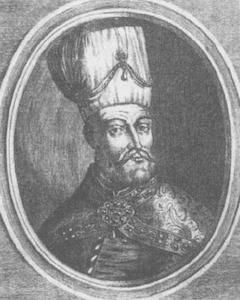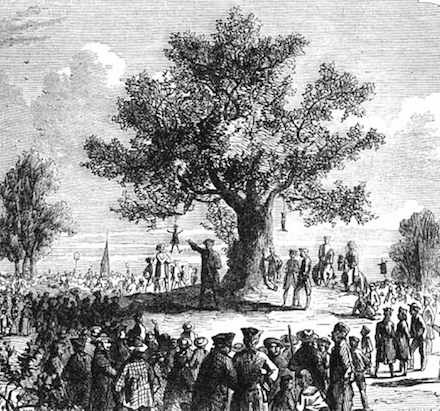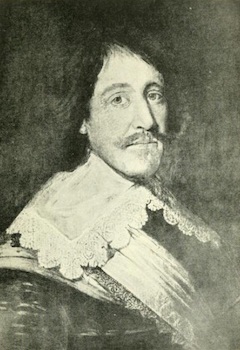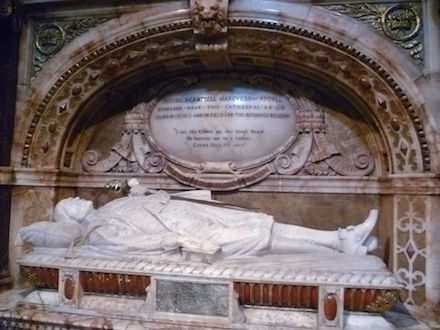On this date in 1787, the only two men to hang for the infant American republic’s seminal post-independence rebellion went to the gallows at Lenox, Massachusetts.
The newborn United States emerged from the American Revolution (1776-1783) in a parlous financial condition. Forever short of gold and credit, it had paid George Washington’s Continental Army in worthless scrip* and promises of goodwill. Instead, many a Cincinnatus returned from Yorktown to discover his debtor farm dunned by creditors and taxmen, as desperate as he for hard currency.
Come 1786, protests against unpayable taxes verged into an outright rural insurrection in western Massachusetts. Known for one of its principals, Daniel Shays — who like so many of his fellows was a Continental Army veteran turned penniless farmer — this rebellion continued for several months and took earnest aim at the hated Massachusetts merchant elites. Some 4,000 “Shaysites” would eventually admit to** taking the field as rebel guerrillas. They mounted an attack on a federal armory, and seized weapons where they could for their own use.
A few books about Shays’s Rebellion |
|
|
It was this last act which occasions our men’s hangings.
The new American authorities, who had not so many years ago been beckoning this same populace to take up their muskets in revolution, exercised in this moment a brittle authority and they would calculate that the proper balance of due regard for their power without unnecessary resentment entailed only a circumscribed approach.
Instead of charging Shaysites wholesale, most were waved away with a free pardon. And instead of charging treason, the Bay State made its demonstration cases with regular criminal offenses — for burglary when our men John Bly and Charles Rose followed some Shaysite militiaman’s order to confiscate guns and powder from nearby houses. In 1787, that was still a potential hanging offense.
Of course, everyone understood well enough the real offense. On the eve of their executions, someone got the condemned men to sign onto a “Last Words & Dying Speeches” broadsheet with a lesson addressed “To the good People of Massachusetts, more especially to Daniel Shays, and other Officers of the Militia, and the Select men of Towns who have been instrumental in raising the Opposition to the Government of this Commonwealth:”
Our fate is a loud and solemn lesson to you who have excited the people to rise against the Government … Advert to those things — live peaceably with all men — be not too jealous of your Rulers — remember that Government is absolutely necessary to restrain the corrupt passions of men — obey your Honest Governors — be not allured by designing men — pay your honest debts and your reasonable taxes — use your utmost endeavours to give peace to your divided, distracted country …
There was another legacy: the outbreak of Shays’s Rebellion — and the federal government’s impotence to respond to it (it was haltingly suppressed by state militia, with the insurgents at points escaping into New York for breathing room) — helped catalyze the Constitutional Convention from May to September of 1787, and informed its creation of a stronger federal state and of the system of checks upon democratic action that a rebellious populace might wish to undertake.
There’s a podcast episode about Shays’s Rebellion here.
* So widely shunned was the depreciated paper Continental currency issued during the Revolution that the phrase “not worth a Continental” entered the parlance of the times; it was these notes that had been given to revolutionary soldiers by way of aspirational salary like so many stock options from a foundering Silicon Valley startup. In 1791, these Continentals were bought out by the new federal government at one cent on the dollar.
** This census arrives via applications for the free amnesty eventually offered to the Shaysite rank and file.
On this day..
- 1816: Marci Zöld, Hungarian outlaw
- 1889: Two Apaches in Arizona
- 2012: An unknown organ donor, executed at a hospital
- Feast Day of St. Nicholas
- 1985: Carroll Edward Cole
- 1938: Martha Marek, Zeliopaster
- 2006: A father-daughter drug smuggling team
- 1769: Two weavers, for the Spitalfield riots
- 1209: The Oxford clerks
- 1823: Dr. Edme Castaing, the first to kill with morphine
- 1638: The melancholy Dorothy Talby
- 41 B.C.E.: Arsinoe IV, Cleopatra's sister

 A party cadre since 1921, the non-chairman Mao served a variety of economic leadership posts for the Red Army.
A party cadre since 1921, the non-chairman Mao served a variety of economic leadership posts for the Red Army. A veteran military commander, Khovansky (
A veteran military commander, Khovansky ( The metalworker Shlyapnikov was a man who came by his revolutionary politics right from the shop floor. At the age of 10 he left school to work in a foundry, “having learnt to read and write. School was no mother to me, and it was not the teachers who educated me … the teachers were young and very rude, and they often meted out justice to their young charges with their fists. Even during these years, life taught me that there is no justice in this world.” (
The metalworker Shlyapnikov was a man who came by his revolutionary politics right from the shop floor. At the age of 10 he left school to work in a foundry, “having learnt to read and write. School was no mother to me, and it was not the teachers who educated me … the teachers were young and very rude, and they often meted out justice to their young charges with their fists. Even during these years, life taught me that there is no justice in this world.” ( Pietro Canepanova was his name by birth, and Bishop of Pavia was his rank when elected.
Pietro Canepanova was his name by birth, and Bishop of Pavia was his rank when elected.
 As a civil servant in Anhui Province, this militant (
As a civil servant in Anhui Province, this militant ( The greatest
The greatest 


 Once a privy councilor to King Charles I,
Once a privy councilor to King Charles I, 